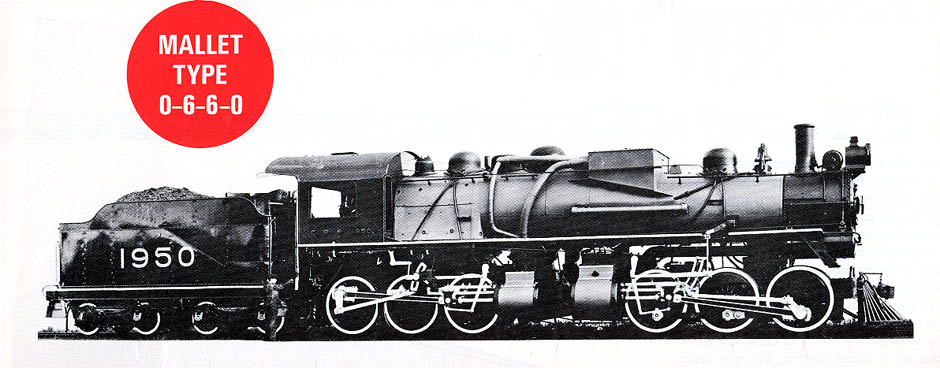 |
|
Collectors' Item 6 by Omer Lavallee In the evolution of the steam locomotive, it was inevitable that the obvious practice of increasing size to provide more power would reach an effective limit. This limitation manifested itself in two aspects, length and weight. As weight increased, it was necessary to increase the number of wheels in order to keep the axle load within the capacity of track and roadbed structures. Curves, in turn, limited the number of axles in a rigid locomotive frame. The answer to both problems was found in the articulated locomotive, which took many forms. The design most favoured in North America was that evolved by the French engineer, Anatole Mallet. His principle contemplated the construction of a rigid locomotive frame as long as operating characteristics permitted, with the remaining weight and additional length of the locomotive boiler carried at the front on a second, swivelling - or articulated - frame. Both the rigid and |
articulated frames were provided with
driving wheels, cylinders, rods and motion. Mallet took advantage of the two distinct sets
of running gear to use the compound steam distribution system, the
Save for one small industrial locomotive which operated latterly on Vancouver Island, Canadian Pacific possessed Canada's only Mallet articulated locomotives, though hundreds were in use at different times in the United States. The In 1917, all six Mallets were converted to conventional |
|